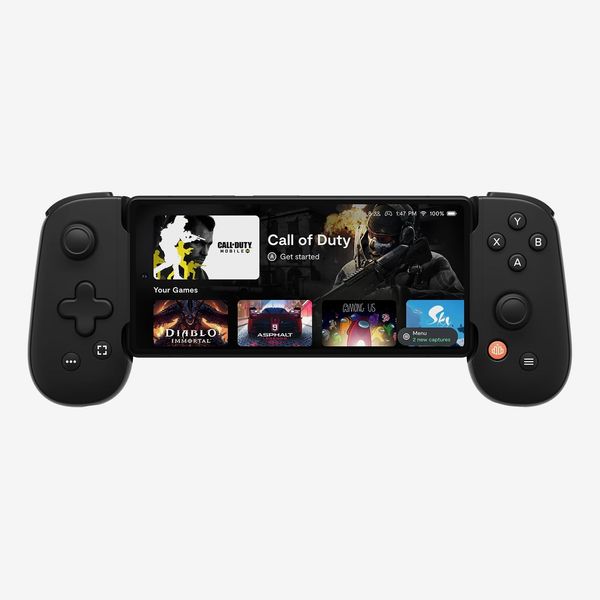The Origins of Game Consoles
The story of game consoles begins in the 1970s. It is a tale of how simple electronic systems evolved into complex entertainment hubs. The very first game console introduced to the public was the Magnavox Odyssey. It allowed players to enjoy interactive games on their home televisions. Before the Odyssey, video games were mostly confined to arcades and university labs. People could only dream of playing games in the comfort of their living rooms.
The concept of ‘what is a game console’ was vastly different back then. Early consoles could only play basic games with simple graphics. They were often just boxes with switches and dials, lacking the complex controls or visuals we see today. But the idea was groundbreaking. It created a new form of home entertainment and opened the door for countless innovations. The journey from these humble beginnings to modern consoles shows a remarkable transformation. It’s a progression from basic play to immersive, high-definition experiences. The origins of game consoles reflect a time of innovation and imagination, setting the stage for the gaming revolutions that would follow.

The first generation of game consoles set the foundation for home entertainment. Released in 1972, the Magnavox Odyssey marked the birth of the commercial home video game console. It was a leap forward, turning the dream of playing video games at home into reality. However, what is a game console today owes a lot to those early innovations. The Odyssey was simple in design. It had no sound capabilities and used plastic overlays on the TV screen for visuals. Nonetheless, it was a milestone in gaming history.
Shortly after came Atari’s Home PONG. PONG, a pixelated representation of table tennis, became immensely popular. It was released in 1975 and had sound, scored points, and adjusted settings. The game was built into the console, offering a new level of engagement and excitement for users. Home PONG was a complete unit, with no need for cartridges. This made the gaming experience straightforward and accessible. It was a critical success and is often credited with establishing the video game market in the public eye.
These early consoles were critical in defining what is a game console. They laid the groundwork for all future developments in the gaming industry. With their release, the concept of gaming began to shift from arcades to living rooms. The era was not just about the technology but also the transformation of gaming into a mainstream form of entertainment. Although limited by today’s standards, they were the giants on whose shoulders the industry would stand and grow.
The Rise of Cartridge-Based Consoles
With the success of Home PONG, the gaming world was ripe for evolution. This came with the advent of cartridge-based game consoles. The birth of this technology marked a new era in what is a game console. Cartridge-based systems like the Fairchild Channel F, released in 1976, allowed players to swap games. This meant more variety without the need for multiple consoles.
The Atari 2600, launched in 1977, revolutionalized home gaming. Its broader library of games, thanks to the use of cartridges, made it a household necessity for gaming enthusiasts. Players now had the freedom to collect and play a myriad of games. The cartridges also enabled developers to expand game complexity and length.
Significantly, these consoles moved gaming from single-game units to multi-game platforms. They set a standard for user convenience and variety, influencing future console designs. The shift led to increased competition, improved graphics, and more intricate gameplay. As a result, the question of what is a game console took on new dimensions. Now, it was not just a gaming device but a gateway to a vast world of digital entertainment.
The 8-bit Era and the Console Wars
The 8-bit era was a pivotal time in defining what is a game console. This period, marked by the 1980s, saw an explosion of new technologies and a significant shift in the gaming industry.
During this time, major players like Nintendo and Sega entered the market, sparking the legendary console wars. The competition between these brands pushed the boundaries of what game consoles could do. It led to rapid innovations in gaming technology and design.
Nintendo Entertainment System (NES)
Nintendo’s foray into the gaming scene with the NES catapulted the company to prominence. It was an 8-bit console with a robust library of games that set the standard for home gaming. Iconic titles like ‘Super Mario Bros.’ and ‘The Legend of Zelda’ became household names, defining adventure and platform gaming genres.
Sega’s Response: The Master System
Sega responded with the Master System, showcasing superior graphics and sound compared to its competitors. Although not as successful in the United States, it gained a substantial following in Europe and Brazil. Sega’s console offered a different gaming experience, with titles like ‘Sonic the Hedgehog’ standing out.
The clash between Nintendo’s NES and Sega’s Master System symbolized the console wars. This battle for market dominance led to the elevation of gaming as a culture. It spurred a generation of gamers loyal to their console of choice, a sentiment that persists even in modern gaming discussions.
In conclusion, the 8-bit era was more than just an upgrade in graphics. It was a time of fierce competition and brand loyalty. It gave birth to iconic characters and franchises that are still loved today. This era thus redefined what is a game console, broadening it from a simple entertainment device to an icon of popular culture.
Transition to 3D: The Fifth Generation Leap
The transition to 3D gaming marked a monumental phase in defining what is a game console. The fifth generation of consoles brought graphics from flat, pixelated images to life-like three-dimensional worlds. This advancement was not just a technical leap but a complete transformation of gaming experiences.
The Sony PlayStation, released in 1994, was pivotal in this shift. It offered players their first taste of 3D gaming with titles like ‘Crash Bandicoot’ and ‘Final Fantasy VII.’ Gamers could now explore vast environments and experience stories in ways that were unimaginable before.
Nintendo, not far behind, launched the Nintendo 64 in 1996. It featured a unique controller designed for 3D game navigation and gave us classics such as ‘Super Mario 64’ and ‘The Legend of Zelda: Ocarina of Time.’ These games were landmarks in 3D gaming, setting high standards for game design and playability.
Sega also entered this new arena with the Sega Saturn, although it faced tough competition from its rivals. Despite this, the Saturn had its share of memorable 3D titles. The fifth generation also saw the arrival of lesser known consoles like the 3DO and the Atari Jaguar. They added to the variety of the market, even if they didn’t reach the same success.
One cannot overstate the impact of this era. It shaped the core of what is a game console by expanding capabilities and gamer expectations. Clear lines were drawn between previous generations and the new possibilities that 3D gaming offered. This leap into a three-dimensional space was a game-changer, literally, and it paved the way for future advancements in console gaming.
The Emergence of Online Gaming in Consoles
The narrative of what is a game console continued to evolve with the introduction of online gaming. This feature transformed consoles from standalone entertainment systems into connected, social platforms. The shift began in the late 1990s and early 2000s, redefining how we interact and play with one another.
The Sega Dreamcast was the first to spotlight online capabilities in consoles. Released in 1998, it allowed gamers to connect to the internet using a built-in modem. Players could now compete and collaborate in a virtual space, marking a new dawn for interactive gaming.
Following Sega’s innovation, Sony’s PlayStation 2 and Microsoft’s Xbox deepened the online gaming experience. They launched in the early 2000s, equipped with network adapters. These consoles offered robust online features, including multiplayer games and digital content downloads. The PlayStation 2’s online feature set the stage for the PlayStation Network, while the Xbox introduced Xbox Live. This service became a cornerstone for online multiplayer gaming and digital media services.
Online gaming was more than just a technical improvement. It forged communities, friendships, and rivalries among players from across the globe. It encouraged developers to create games that were more engaging and long-lasting. Moreover, it introduced online marketplaces, paving the way for game downloads and updates.
This era of game consoles showed that playing games was no longer a solitary activity. Players expected to connect, share, and compete as part of their gaming experience. The significance of online gaming in consoles cannot be overstated. It has become a fundamental aspect of what is a game console today.
Modern Consoles: High Definition and Beyond
The concept of ‘what is a game console’ has continually evolved. Today’s modern consoles offer high definition (HD) visuals and immersive experiences that were once unthinkable. These devices are no longer just for gaming. They have become multifaceted entertainment systems.
Modern consoles like the Sony PlayStation 4, Microsoft Xbox One, and Nintendo Switch redefine what is a game console. They boast HD graphics, rich online features, and vast ecosystems of apps. Players can stream movies, listen to music, and socialize on these platforms. Games themselves are now cinematic, with complex stories and realistic graphics.
These consoles provide a seamless experience, with user-friendly interfaces and interconnected services. With the rise of digital downloads, physical discs are becoming less common. Players enjoy instant access to a library of games and media. Voice control and motion sensors add new ways to play and interact.
Game consoles also cater to virtual reality (VR) experiences now. Sony’s PlayStation VR, for instance, transports players into 360-degree worlds. The impact of modern consoles extends well beyond gaming, influencing how we consume media and interact with technology.
In sum, the question of what is a game console now leads to an array of answers. From gaming to general media consumption, consoles are at the heart of home entertainment. Their evolution continues to push the boundaries of digital technology and user experience.
The Future of Game Consoles: Streaming and Innovation
As we look ahead, the concept of what is a game console continues to shift. The future points toward streaming and innovation, reshaping our understanding and expectations of gaming. The rapid advances in internet technology have paved the way for game streaming services. These platforms allow players to stream games directly to their consoles without needing physical media. This method echoes how we consume movies and music today, favoring access over ownership.
This new era is epitomized by services like Google Stadia and Microsoft’s Xbox Game Pass. They offer extensive libraries of games with the convenience of instant play. This shift to streaming also brings the potential for cross-platform play, bringing gamers together regardless of the hardware they own.
Innovation in game consoles doesn’t stop at streaming. There’s also a growing integration of artificial intelligence (AI), making gaming more interactive and personalized. AI can adapt game difficulty in real-time or suggest games based on playing habits. Additionally, the exploration of augmented reality (AR) and further advances in virtual reality (VR) promise to make gaming more immersive and engaging.
As for hardware, there’s a trend towards more eco-friendly, energy-efficient consoles. Manufacturers are considering the environmental impact of their devices more than ever before. Console designs may also become more modular, allowing for easier upgrades and longer lifespans.
In essence, the future game console is not just a gaming device but a central hub for digital entertainment. It is a testament to the evolving nature of what is a game console—a fusion of gaming, social interaction, and multimedia experiences. Game consoles have become reflections of our technological advances and a window into the future of entertainment.


